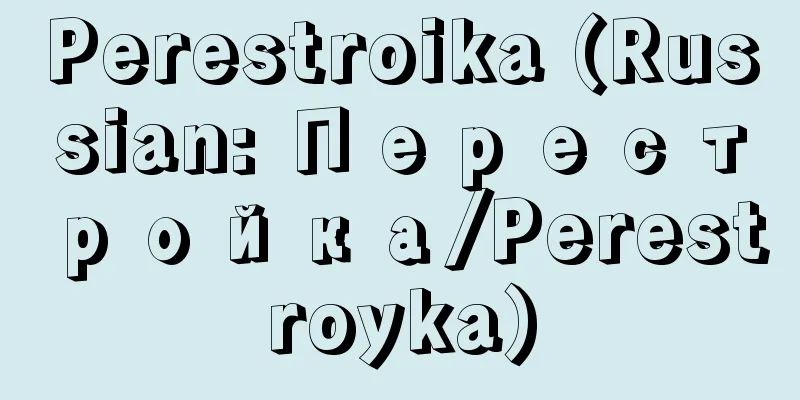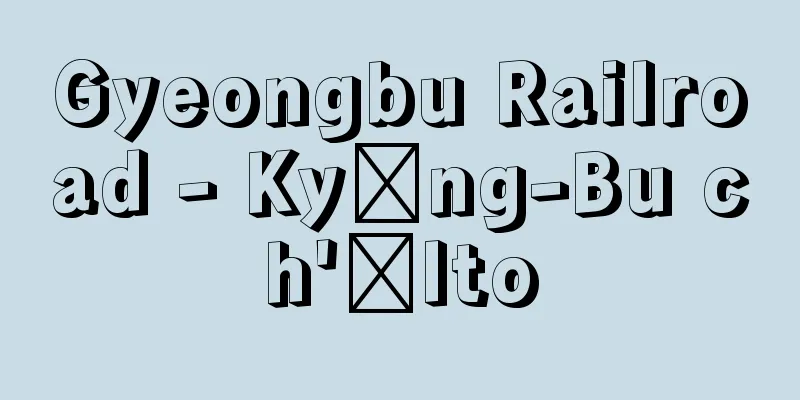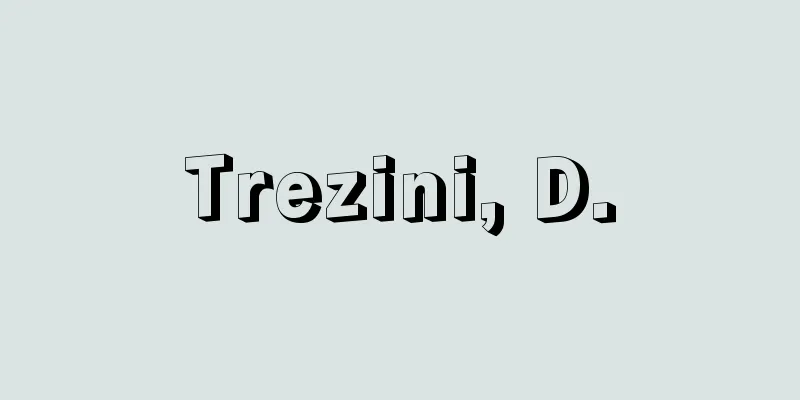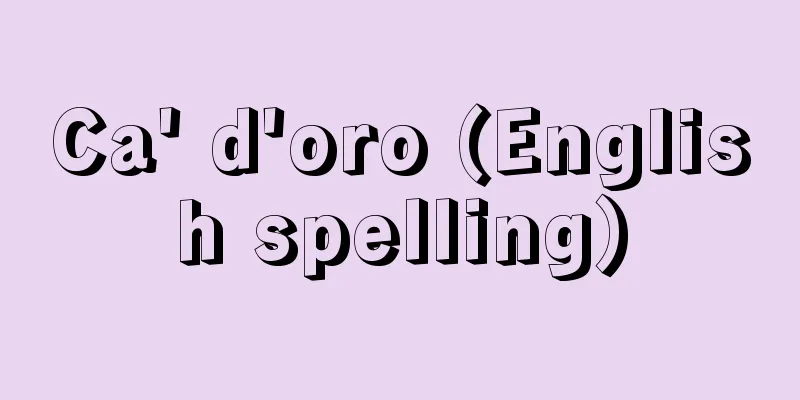Perestroika (Russian: Перестройка/Perestroyka)

|
In Japan, it is translated as "reorganization," "reform," or "transformation," but in the original Russian, it is a combination of the prefix "Pere," meaning "again" or "repair," and the noun "stroyka," meaning "building," so it literally means "reconstruction" or "remodeling." In English, it is often translated as "reconstruction" or "restructuring." It occupies the key position among the three slogans put forward by the Gorbachev administration of the Soviet Union: perestroika, glasnost (openness), and uskolenie (acceleration). Gorbachev became General Secretary of the Communist Party of the Soviet Union in March 1985 following the death of Chernenko, and at a plenary session of the Central Committee of the Party the following April, he frankly acknowledged that the Soviet economy had experienced "difficulties" from the late 1970s to the early 1980s, and first raised the task of "accelerating economic development," and then emphasized the "activation of the human factor" in the Anti-Alcoholism Campaign and other such efforts. At the 27th Party Congress in February-March 1986, there was some reference to "radical reform," but overall it was generally understood to have been a culmination of the policies of the new government over the first year since its inauguration, combining an "acceleration strategy" centered on technological innovation with "improvements" of economic mechanisms and the "strengthening of the human factor." Perestroika was first placed squarely at the center of the agenda at the Central Committee Plenum in January 1987. At this plenum, perestroika was brought up in conjunction with political reform and democratization issues, and around this time the mass media launched a wave of criticism of the 1930s, creating an atmosphere that could be called a "second criticism of Stalin." At the same time, the direction of "radical" economic reform was set, and a consistent outline of economic reform for the time being was laid out in the "State Enterprise Law," which was adopted at the Central Committee Plenum in June and formally enacted into law at the Supreme Soviet at the end of the same month. On the other hand, from this point on, there was less mention of "acceleration," and the emphasis clearly shifted to "perestroika for the sake of acceleration." With the 70th anniversary of the October Revolution approaching on November 7, 1987, the direction of rehabilitating the honor of former leading politicians such as Bukharin, Zinoviev, Tomsky, Radek, and others, excluding Trotsky, was almost certain, marking the beginning of a rewriting of Soviet history. The term perestroika is used in a wide variety of ways, but it can be understood as a broad line of "reconstruction" and "revitalization" that includes the economy, society, politics, and even the psychology of the people. The target of this "reconstruction" was the entire state of Soviet society, the basic framework of which had been established in the 1930s, so it is not without reason that Gorbachev called it the "second revolution" following the October Revolution. Perestroika certainly had a strong character of "reconstruction from above," but it could be said that it pursued the exact opposite goal in that it was trying to change the framework of Soviet society that had been created by Stalin's "revolution from above" from the late 1920s to the mid-1930s. It is easy to point out its "limitations," but we should not overlook the fact that it promoted the awakening of civil society consciousness in the sense that the critical eyes of reformist intellectuals were directed not only at the 1930s, but also, in part, at the "dark side" of the October Revolution. Just as the Great Depression of 1929-1933 gave birth to the New Deal in the United States in the 1930s, perestroika was directly driven by the economic crisis of 1979-1982, and indirectly by the stagnation that had been present since the early 1970s. However, the intense political, social and inter-ethnic conflicts that arose from the deep economic crisis went beyond the scope of perestroika, which aimed to reform within the framework of socialism, and after a hectic process that saw the coup d'état of August 1991, when Russian President Yeltsin seized power and the Communist Party was dissolved, and in December of the same year the Soviet Union was dissolved and Soviet President Gorbachev resigned, perestroika came to an end, giving way to the collapse of socialism and a full re-capitalization. [Tsuneaki Sato] "Perestroika" by Gorbachev, translated by Tanaka Naoki (1987, Kodansha)" ▽ "Gorbachev Memoirs, Volumes 1 and 2, translated by Suzuki Yasuo et al. (1996, Yomiuri Shimbun)" ▽ "The History of the Soviet Union in its End" by Shiokawa Nobuaki (1993, Asahi Shimbun)" ▽ "What Was Socialism? by Shiokawa Nobuaki (1994, Keiso Shobo)" ▽ "What Was the Soviet Union? by Shiokawa Nobuaki (1994, Keiso Shobo)" [References] | | | | | | | | |Source: Shogakukan Encyclopedia Nipponica About Encyclopedia Nipponica Information | Legend |
|
日本では「再編」「改革」「変革」などと訳されているが、本来のロシア語では、「再」もしくは「直す」という意味の接頭語Pere‐と「建物」を意味する名詞のstroykaを組み合わせたものであるから、文字どおりは「建て直し」「改築」を意味することばである。英語ではreconstruction, restructuringと訳されていることが多い。ソ連のゴルバチョフ政権が掲げた、ペレストロイカ、グラスノスチ(公開性)、ウスコレーニエ(加速化)の三つの標語のうち、要(かなめ)の位置を占めている。 ゴルバチョフは1985年3月、チェルネンコの死でソ連共産党書記長に就任するや、翌4月の党中央委員会総会で、1970年代末から1980年代初めにかけてソ連経済に「困難」が存在していたことを率直に認め、まず「経済発展の加速化」の課題を提起し、ついで反アルコーリズム・カンパニヤなどで「人間的要因の活発化」を強調した。1986年2~3月の第27回党大会では、一部に「ラジカルな改革」への言及もあったが、全体としては新政権発足後1年間の路線を集大成し、技術革新を軸とする「加速化戦略」に経済メカニズムの「改善」と「人間的要因の強化」を組み合わせたものと一般には理解されていた。 ペレストロイカが中心課題として真正面に据えられたのは、1987年1月の中央委員会総会に始まる。この総会では、ペレストロイカは政治改革、民主化問題と結び付けて提起され、この前後からマス・メディアでは1930年代批判の論陣が一斉に張られ、「第二次スターリン批判」ともいうべき雰囲気が醸し出された。これと並んで、「ラジカル」な経済改革の方向が設定され、6月の中央委総会で採択されて同月末の最高会議で正式に法律となった「国営企業法」その他で、当面の整合的な経済改革の構図が示された。反対に、このあたりを境に「加速化」には言及されることが少なくなり、「加速化のためにもペレストロイカ」というふうに明らかに重点が移動することになった。1987年11月7日の十月革命70周年記念日を前にして、ブハーリン、ジノビエフ、トムスキー、ラデックその他、トロツキーを除くかつての指導的政治家の名誉回復の方向がほとんど確定し、ソ連史書き直しの口火を切った。 ペレストロイカということばはきわめて多義的に用いられているが、経済、社会、政治から民衆心理までを含む、広い意味の「建て直し」「活性化」路線と解することができよう。この「建て直し」の対象となっているのは、1930年代にその基本的枠組みができあがったソ連社会のあり方のすべてであるから、ゴルバチョフがこれを十月革命に次ぐ「第二の革命」とよんだのも、理由のないことではない。ペレストロイカは確かに「上から」の建て直しという性格が強いが、それは、1920年代末から1930年代なかばにかけて、スターリンの「上からの革命」でつくりあげられたソ連社会の骨格を変えようとしている点で、まさに逆の目標を追求していたものということができる。その「限界」を指摘するのは容易であるが、改革派知識人の批判の目が、1930年代ばかりか、部分的には十月革命の「暗部」にも向けられたという意味で、市民社会意識の覚醒(かくせい)を促したことを見落とすべきではない。 1930年代のアメリカにおけるニューディール(新規巻き直し)を生み落としたのが1929~1933年大恐慌であったのと同様に、ペレストロイカは直接的には1979~1982年の経済危機と、間接的には1970年代初めからの停滞を背景としていた。しかし、深い経済危機を背景とする激しい政治的、社会的および民族間の対立抗争は、社会主義の枠内での刷新を目ざすペレストロイカの枠を超え、1991年8月のクーデターを契機とするロシア共和国大統領エリツィンの主導権掌握と共産党解体、同年12月のソ連解体と連邦大統領ゴルバチョフの退陣というめまぐるしい経過を経て、ペレストロイカはその幕を閉じ、社会主義崩壊と全面的な再資本主義化に道を譲った。 [佐藤経明] 『ゴルバチョフ著、田中直毅訳『ペレストロイカ』(1987・講談社)』▽『ゴルバチョフ著、鈴木康雄他訳『ゴルバチョフ回想録』上下(1996・読売新聞社)』▽『塩川伸明著『終焉の中のソ連史』(1993・朝日新聞社)』▽『塩川伸明著『社会主義とは何だったか』(1994・勁草書房)』▽『塩川伸明著『ソ連とは何だったか』(1994・勁草書房)』 [参照項目] | | | | | | | | |出典 小学館 日本大百科全書(ニッポニカ)日本大百科全書(ニッポニカ)について 情報 | 凡例 |
<<: Ivan Semyonovich Peresvetov
>>: Jerez de la Frontera (English spelling)
Recommend
Tulip - tulip (English spelling)
A bulbous plant of the genus Tulipa in the family...
Paulsen, V.
… [history] The idea of using magnetic media fo...
Golden eggplant - Kinnonasu
A folktale. A humorous tale with the theme of a s...
Pisa Cathedral - Duomo di Pisa
This is a representative example of the Pisan Rom...
Bengara (red stone, red shell) - Bengara
It is also called red ochre, Indian red, Venetian ...
Gallbladder
A sac that temporarily stores bile produced in the...
Potassium sulfate
Potassium sulfate. Also called potassium sulfate....
Marsilius (of Padua)
Around 1275 - 1343 Italian political theorist. Bor...
Interview - Interview
〘 noun 〙① (A person of high rank or status) invite...
Inbreeding - Kinshintouta
...Two concepts have been proposed to explain the...
nymphē (English spelling) nymphe
In Greek mythology, a nymph is a spirit of a moun...
Uca chlorophthalma crassipes
… [Takeda Masatomo]. … *Some of the terminology t...
Kazue Katsuta
A finance bureaucrat and politician during the Me...
Cyperus imbricatus (English spelling)
…[Tetsuo Koyama]. … *Some of the terminology that...
Feminity test
A test given to women in separate sports. It is al...




![Oyano [town] - Oyano](/upload/images/67cfc873a4718.webp)




